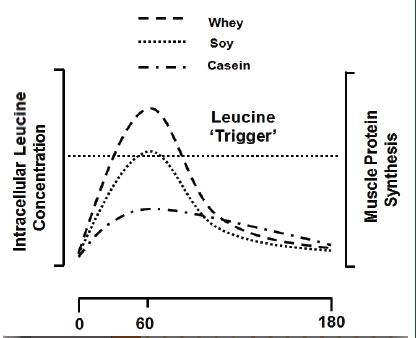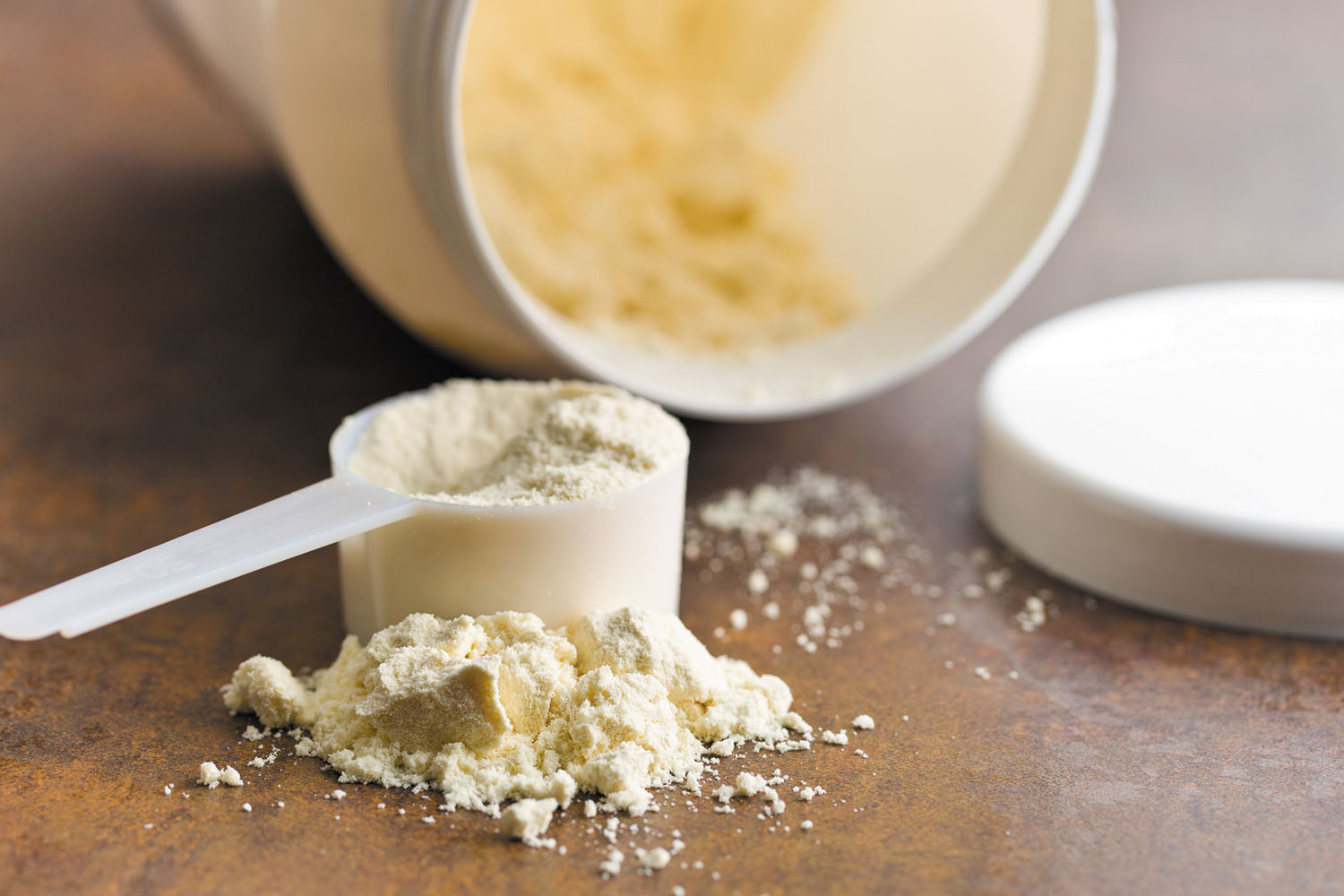When it comes to nutrition and fuelling for exercise, protein gets a lot of attention in mainstream media… and rightly so! Protein is a macronutrient plays an important role in growth and repair of tissues, most notably muscle for building lean mass, but also bones, tendons and ligaments. Protein ingestion around exercise has been widely studied, with notable findings of associations with improved muscle hypertrophy, function, circumference, strength, and endurance1
What Type of Protein?
The nutritional value of proteins are determined by their unique amino acid profile. Proteins with a high biological value (animal-based proteins such as dairy, eggs, meat, fish, and poultry) are superior as they contain all the necessary amino acids. Plant-based proteins still offer some of the amino acids but are of a lower biological value.
Leucine is the particular amino acid responsible for the regulation of muscle protein synthesis. Foods that are naturally high in leucine include milk and red meat. Rapidly digested proteins that contain high levels of essential amino acids and adequate leucine are recommended to be most effective at stimulating muscle protein synthesis. For more information on how to ensure you’re meeting your protein requirements, follow this link to the Sports Dieticians Australia factsheet on protein-rich foods
How much Protein do I need?
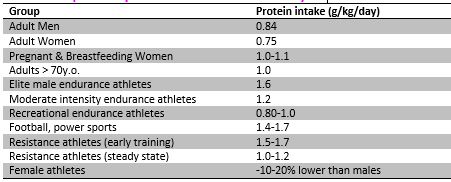
The above table lists the recommended dietary intake of protein for different groups. Most people are generally able to meet their protein requirements through a regular well-balanced diet. Athletes in heavy training, individuals trying to gain muscle mass, and strength athletes have higher protein needs than the general population.
While the total amount of protein you eat is important, the body can only use a limited amount at any one time. Research indicates that 20g high biological value protein (containing 2-3g leucine) maximally stimulate muscle protein synthesis. Quantities of protein in excess of this amount provide no additional benefit to increasing lean mass2
When should I be having protein?
.Dieticians have recently moved away from believing that protein had to be consumed within the 30min “anabolic window” following resistance exercise to stimulate muscle protein synthesis. According to the International Society of Sports Nutrition, doses of high-quality protein should be consumed every 3-4 hours across the day including a pre-bed dosage3. Each time protein is ingested there is a spike in muscle synthesis. Including sources of protein at regular intervals stimulates multiple spikes in muscle synthesis. Pre-sleep casein increases overnight muscle protein synthesis and metabolic rate, so a protein-rich beverage 30min before bed aids muscle protein synthesis, muscle recovery, and overall metabolism4,5
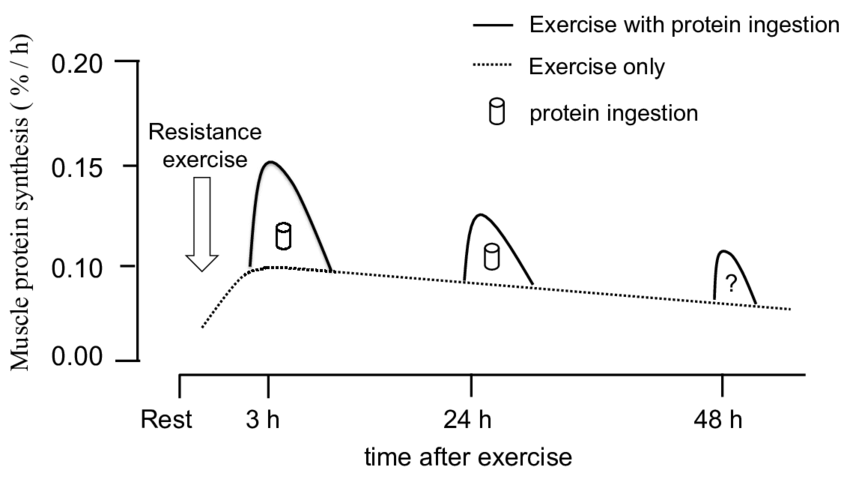
In saying this, muscle protein balance is enhanced further by exercise – combining resistance training and protein ingestion creates a net increase in muscle protein synthesis to a greater extent than on their own. The “anabolic window” mentioned above, is much longer than originally thought, at least 24hrs6. However, it does diminish over time so that muscle protein production appears to peak within the first 60-90mins after resistance exercise7,8,9. Integrating some protein rich food (15-30g of protein depending on body size) into the post-training snack/ meal amplifies the muscle building signals turned on by exercise, to promote muscle repair, growth, and adaptation.
Do I need to take protein supplements?
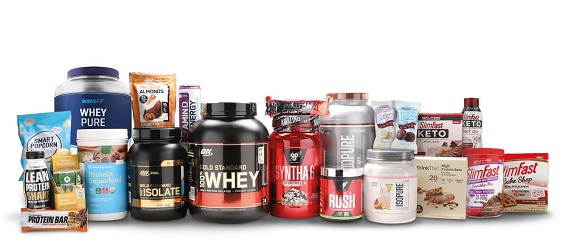
Most individuals are able to meet their protein requirements through eating whole food, but supplementation is a practical way to ensure you are receiving adequate quality and quantity of proteins. There are a range of different protein and amino acid supplements available, and their ingredients can be quite confusing.
Whey protein is a high biological value protein which is rapidly and rich in branched chain amino acids, especially leucine, and is the most commonly used protein supplement10. Compared to other protein sources such as casein, whey protein ingestion promotes superior gains - stimulating greater muscle building at both rest and following exercise11. This is why whey is my first recommendation of protein supplements to my athletes or clients looking to promote muscle growth. It can be most commonly found as Whey Protein Concentrate (WPC) or Whey Protein Isolate (WPI) WPI offers 10-20% more protein by weight and with negligible amounts of CHO and fat.
Soy protein is gaining a lot of popularity in recent times and offers another rapidly digested high biological value protein, one of the best plant-based protein options. Soy protein is able to stimulate muscle protein synthesis, but not to the same degree as whey protein11, although it is more effective and more rapidly digested than casein. Intervention studies have shown little-to-no change in lean mass or fat mass with soy protein, compared to favourable changes with the consumption of whey12.
